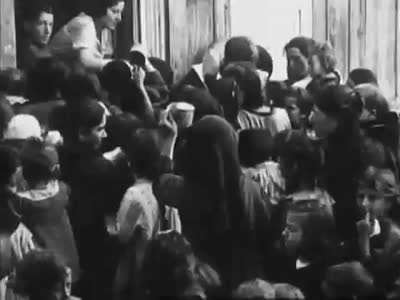Smyrna 1922
12 Σεπτεμβρίου 2011
WHEN Smyrna—modern Izmir—fell to the Turkish army in 1922, and much of it was destroyed by fire, the city’s role as a bastion of Greek and Christian culture, going back nearly 2,000 years, came to an abrupt end. Before that, the port had been home to a diverse and cosmopolitan population; by the standards of the region, it was a beacon of tolerance and prosperity.
In addition to the Greeks, Armenians, Jews and Turks, there were also Americans and Britons and what Giles Milton calls the “Levantines”, rich families of European descent, who spoke half a dozen languages and occupied vast villas. Their dynasties dominated the trade and industry of the region. Some (like the Whittalls) retained British nationality over generations of Ottoman life, and it is their English-language diaries, letters and documents that provide Mr Milton with his best material. Although this slant is unrepresentatively British and privileged—lots of parties and picnics—it allows the author to be fair towards the Greeks and the Turks, who still blame one another entirely for the disaster.
The city’s destruction—still known in Greece as “the catastrophe”—had its roots in the first world war and the effort by the great powers to grab pieces of the disintegrating Ottoman empire.
Britain, America and France backed Greece’s charismatic leader, Eleftherios Venizelos, in his pursuit of the megali idea (“great idea”), the dream of creating a greater Greece by occupying Smyrna and swathes of Anatolia. Having licensed a war by proxy, the allies in varying degrees turned cool on it. They looked on passively as Mustafa Kemal (later Ataturk, republican Turkey’s founder) and his troops routed the Greeks from Anatolia and reoccupied Smyrna, bent on revenge for Greek atrocities in the city and further east.
The port was ransacked and looted for days. Women were raped and mutilated, children were beheaded and more than 100,000 people killed. Meanwhile, 21 allied warships sat in the harbour. Hundreds of thousands of refugees were trapped on the city’s quayside, yet officers on the ships still dressed for dinner and ordered louder music to drown out the screams. “Paradise Lost” is a timely reminder of the appalling cost of expansionist political ambitions; it tells a fascinating story with clarity and insight.
Comment from the owner of the video: My grandfather, George Magarian, born in 1895, educated at the American College at Konia, Turkey and, later, director of the Konya YMCA, filmed Smyrna, Turkey, immediately after it’s genocidal destruction.
“The Great Fire of Smyrna is the name commonly given to the fire that ravaged Izmir/Smyrna from 13 to 17 September 1922. Turkish armed forces systematically burned the city and killed Greek and Armenian inhabitants. This is based on extensive eyewitness evidence from Western troops sent to Smyrna during the evacuation, foreign diplomats/relief workers based at Smyrna and Turkish sources.” – www.Wikipedia.org
The resulting 35mm edited nitrate film was hidden in my grandmother’s apartment in NYC for 60 years. I was lucky to transfer it to digital before it completely disintegrates. -Robert Davidian 5 March 2008
Three years ago, I met with Fulbrighter, film maker Maria Iliou, in Washington DC to restore the film and transfer it to HD video at Colorlab. This was an initiative by Iliou & PROTEAS, funded by PROTEAS, a Greek not for profit company, that has been saving archival materials about SMYRNA and THE EXCHANGE all around the world the last 3 years. I gave them permission to include this material in their two projects, SMYRNA and EXCHANGE, that will be opening at the BENAKI MUSEUM in December 15th 2011 (SMYRNA) and February 12th 2012 (EXCHANGE) a first presentation of those images in Greece to be done by my agreement. It is a Maria’s Iliou and PROTEAS initiative, funded by BODOSSAKIS FOUNDATION, JF COSTOPOULOS FOUNDATION, ARGYROS FOUNDATION, NICHOLAS BOURAS FOUNDATION, JIM CHANOS, ROY & DIANE VAGELOS FOUNDATION. – Robert Davidian 19 April 2011
Sources: http://www.aoiusa.org/




